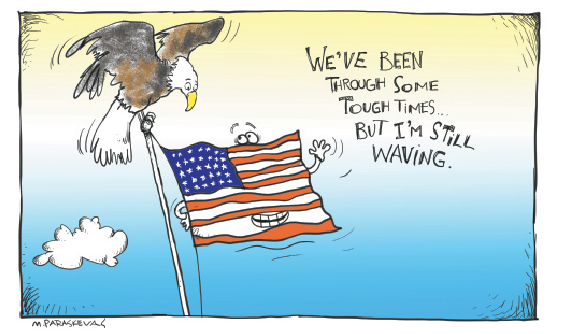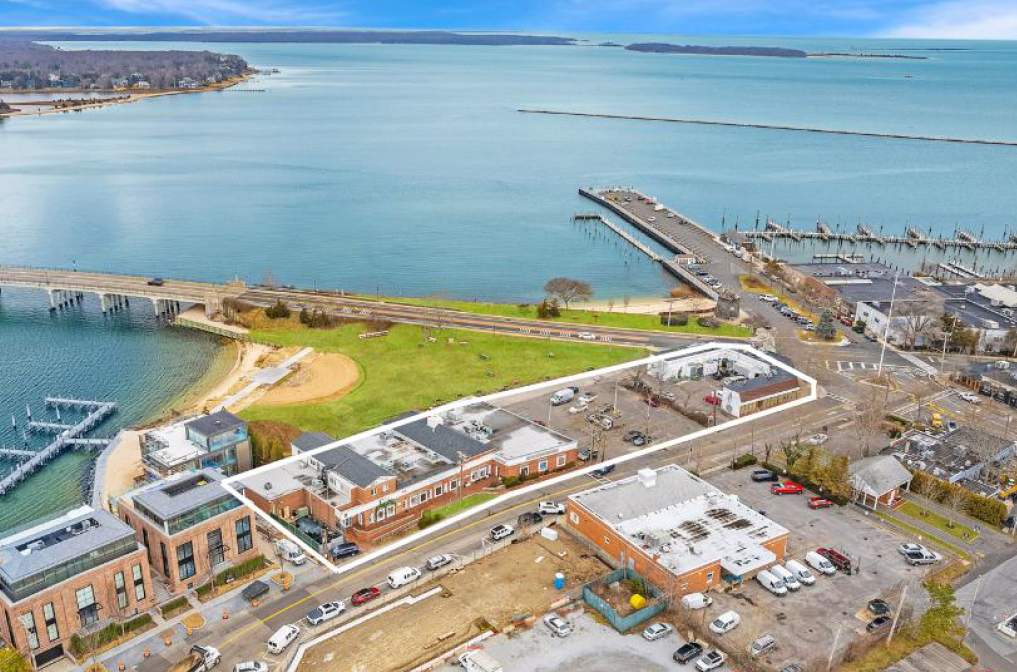Adventures in Patriotism: Lowering to Half-Mast, Sandy, Six Nor’Easters and a Fitting Conclusion

About 30 years ago, I had a flagpole company place a 35-foot-high flagpole on the front lawn of my house, from the top of which, of course, I flew a big American flag. I did this not because I am a right-wing conservative or anything, but for other reasons.
For one, I live on a harbor that has four marinas within sight of my house, and on many of the boats in those marinas, various pennants and nautical flags fly all summer. For the other, I always have felt America and its democracy made us the land of the free and the greatest country in the world. I could look out the sliders from our living room and see our flag flying and I felt very patriotic about it. Below that flag, hanging from a yardarm, I had eight other smaller flags, all nautical ones. I could send nautical messages on it by flying various naval flags. Other boats and, most notably, another house across the harbor, did things like that. Generally, I was adding to the joy and melee in the harbor.
Often, in times of national tragedy, I have lowered the flag to half-mast when the President has ordered it be done. He is our Commander in Chief, after all. It helped me grieve and announced solidarity with others who were also doing so. Also, when my flag would get old and frayed and in need of being replaced, I would take it down and fold it into a triangle carefully and dispose of it properly, by burning it. One never throws an American flag away.
Last December, I lowered the flag to half-mast after the tragedy at Newtown Elementary School in Connecticut. I left it that way a few days longer than I was supposed to, I think. Maybe it was wrong. Maybe I just forgot to haul it back up. In any case, it was still at half-mast when the first of the winter nor’easters came through, and, afterwards, I found that the flag had become very badly twisted up there in its lines. You couldn’t take it back up, and you couldn’t take it down. It looked pretty terrible.
Winter settled in after that storm. I tried going out there to see if I could get it untangled with some long metal poles I had, but it was impossible. Also, you couldn’t stay out there long in that weather. I’d have to get someone to bring a tall ladder, go up there and take it down.
(I should call FEMA, I thought at one point, rather malevolently. There’s $60 billion in storm damage repair coming. I ought to get 50 bucks out of it, anyway. Have them bring one of their trailers and repair my damage. But I never did that, of course.)
We had a total of six nor’easters during the winter months. After one would roar through, another would be right on its heels. I had a few appointments with people with ladders, but all were cancelled because of the weather. The situation stayed on and on.
I confess to feeling bad about this. People drive by my house on Three Mile Harbor Road. You can’t miss the flagpole. America was in a sorry state up there. I recalled one time, about 30 years ago, a man appeared at the offices of Dan’s Papers carrying a perfectly folded-up, used 8×10 foot American flag. He had been in the Marine Corps, he said. And he had driven by the flagpole on the town green in East Hampton Village late the night before and had found the flag up there still flying in the dark and the rain. It’s not supposed to be left up there like that. You’re supposed to take it down. So he had taken it down. Stole it, actually. And here he was, flag in hand, bringing it to the newspaper office for us to deal with.
“You tell them what happened,” he said. And he saluted as he handed it to me. “It shouldn’t happen again like this.”
I thought, maybe someone will
drive by and curse loudly at my house because of the state of the flag. Maybe somebody will write graffiti on our fence. Maybe I should put a sign up on the fence: “Flag Coming Down When the Weather Breaks.” But none of those things happened.
And then I remembered about 40 years ago when Robert Gwathmey, an artist and the father of the celebrated architect Charles Gwathmey, raised an American flag on his flagpole upside-down. This was during the Vietnam War, and he was doing it as a protest. He was arrested and he went to court to fight it. I think he paid a fine.
Well, finally it was the first day of spring, and Don Palahnuk from the Northville Flag Company came out with a truck and ladder and worked a half-hour up there and made this right. He also changed the lines to nylon and put in brass clips. He had, I noticed, the bearing of a military man—sure of himself, decisive, calm—and I asked him about it.
Yup. Navy, in the 1980s.
We look out the sliders now and there it is, the American flag waving mightily high up there in the wind. Thank you, sir.



